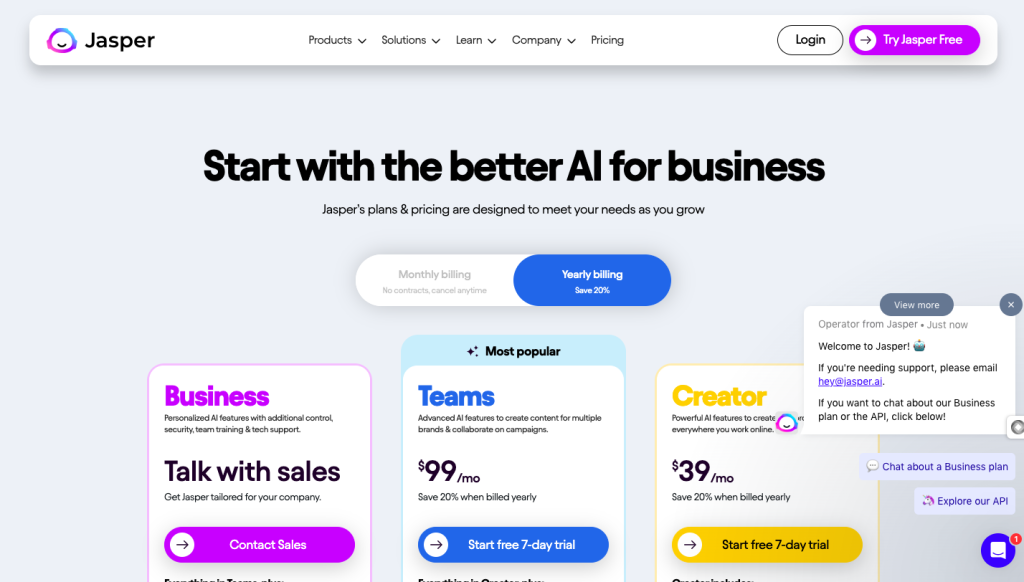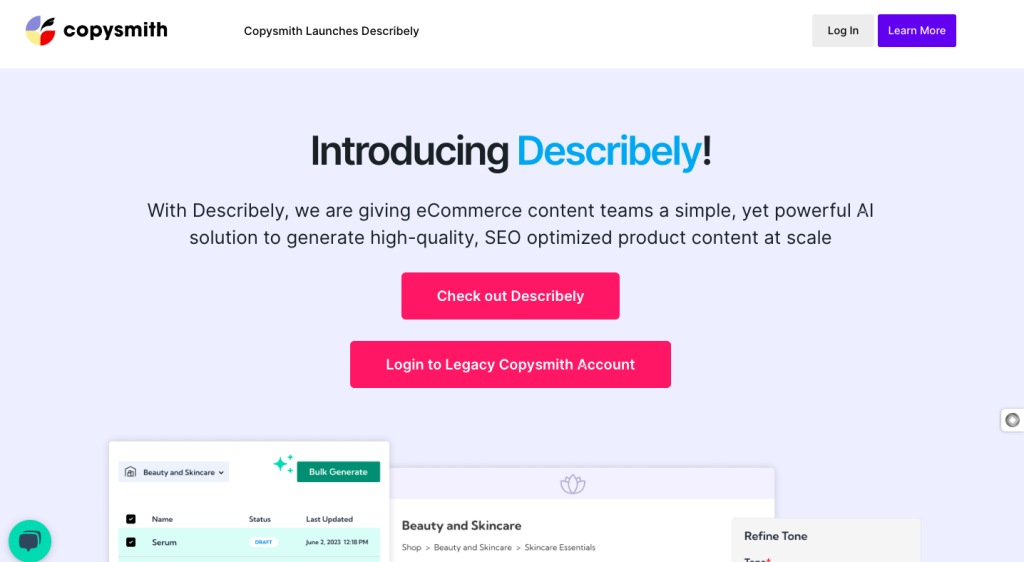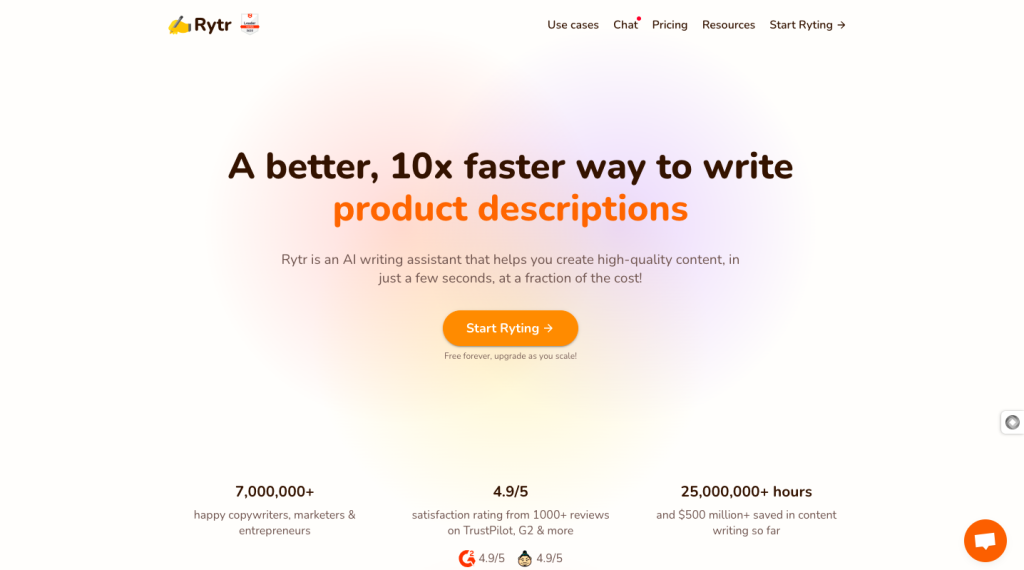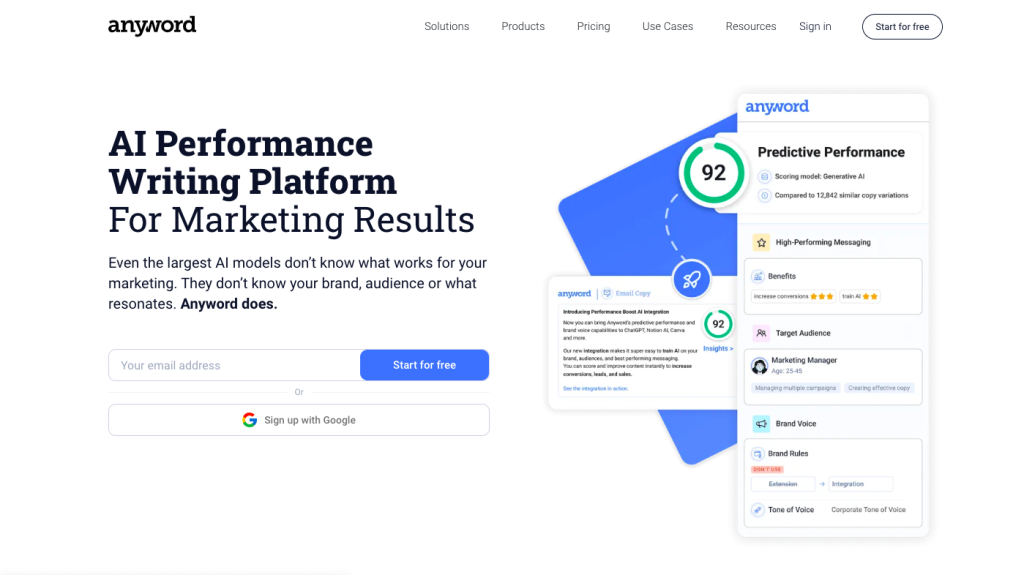SEO is a constantly evolving target, with Google updating its algorithms several times a year, making strategies from 2018 or 2019 potentially less effective in 2025. This continuous change can lead to immense frustration as your once-thriving website starts to lose traction.
Additionally, if your organic traffic isn’t growing as it once did, it’s probable that Google has changed its content ranking method. Such changes can significantly impact your rankings.
But don’t worry! We are here to help you navigate the ever-changing SEO landscape with seventeen proven tactics that can boost your organic search presence. Whether you are a newcomer to SEO or a seasoned expert, we have a mix of simple, advanced and effective SEO techniques that you can implement immediately. So, let’s roll up our sleeves and start enhancing your website’s visibility in the exciting world of SEO in 2025!
SEO agencies leverage the most up-to-date and effective SEO techniques to optimize their clients’ websites, thereby enhancing their visibility and ranking on search engine results pages.
AI Tools to Help You Write Content
One SEO tactic that gained traction in 2025 is utilizing AI to create your content. It’s remarkable how AI-powered technologies can assist in crafting various types of content, including articles, blogs, landing pages, emails, ad copies for platforms like Facebook Ads and Google Ads, YouTube video descriptions, product descriptions, job descriptions, and much more.
When it comes to developing AI content, allow me to introduce you to ChatGPT-4, the most advanced and superior version of the AI chatbot ChatGPT-3. This versatile tool includes all the latest features to ensure your audience engages with your content.
With ChatGPT-4, you can craft original, relevant content that reads as if a human wrote it. It’s akin to having a trustworthy writing companion at your fingertips! So, seize this opportunity to elevate your content creation; don’t let it slip away.
These AI-powered writing tools can help you generate large amounts of high-quality, keyword-optimized blog posts or any other type of content. There is a compelling reason why this content marketing SEO technique is gaining popularity. Writing assistants powered by artificial intelligence are becoming increasingly precise, effectively saving you both time and money.
Using a GPT-4 AI tool might seem daunting initially, but it becomes relatively straightforward once you overcome the initial learning curve. Here are a few examples of available tools to assist you:
Jasper:
Jasper is a tool that enables easy creation of long-form materials, such as blog articles or landing pages. It offers useful features for content organization, headline creation, and content section suggestions.
Copysmith:
Copysmith is an excellent choice for generating e-commerce content, such as product descriptions. It even integrates with Shopify, making the creation of appealing and persuasive product descriptions effortless.
Rytr:
Specifically designed for marketing-related content, Rytr offers valuable support whether you need assistance with job descriptions or YouTube video descriptions. Additionally, it provides AI-generated content that aligns with your marketing goals.
Anyword AI:
If you are interested in creating content, including advertisements for various platforms, Anyword AI is a fantastic tool to consider. It leverages AI capabilities to help you craft engaging and compelling copy that resonates with your target audience.
These tools leverage artificial intelligence to enhance content creation. They understand your topic, conduct the necessary research on your behalf, and suggest suitable headers or sections that you might find useful.
For example, you can easily craft an engaging blog article using Rytr, a powerful writing tool. Here are some ways Rytr can assist you:
- Generate topics that are relevant to your audience.
- Create a concise summary and outline for your article.
- Suggest a variety of captivating article headline options.
- Compile a carefully curated list of items for your listicle.
- Craft engaging paragraphs for introductions, conclusions, and transitional sections.
- Develop a compelling meta description for your article.
Here’s how it works: Simply input your topic/keyword and some basic information about the content you wish to cover. The more detailed your instructions, the more accurate the final output.
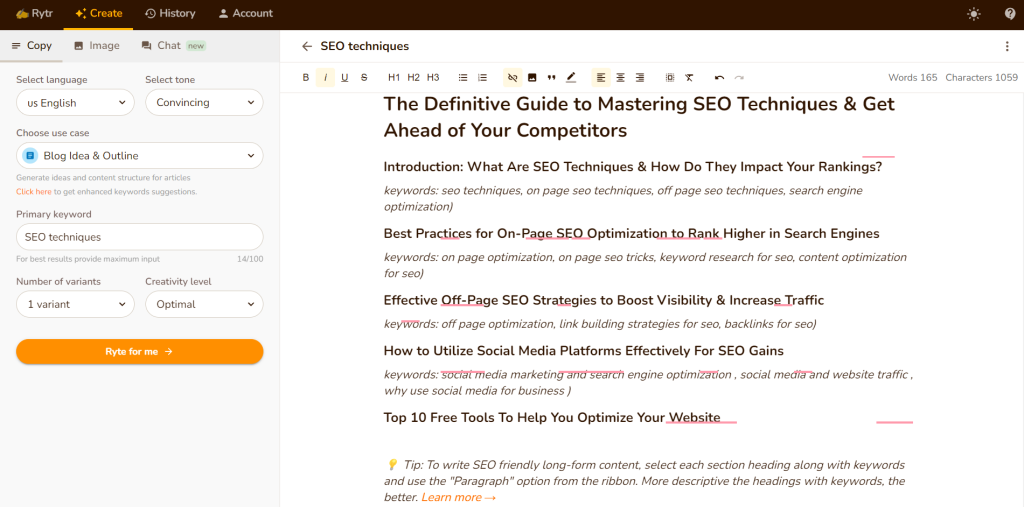
Rytr’s AI writing tool conducts comprehensive research on the topic and swiftly generates a draft of your article. You can then review the draft and make any necessary modifications before publishing it on your website. The entire process takes only seconds, saving you both time and effort.
It’s crucial to ensure that your final document doesn’t contain any instances of plagiarism by checking it through Copyscape. Always make sure your content is unique and free from plagiarism.
Enhancing your SEO efforts is possible by using an AI-powered tool to create content tailored to specific keywords. This optimization makes your content more likely to rank higher on search engine results pages (SERPs), making it an excellent strategy to increase your online visibility.
Also Read: How to Use ChatGPT for SEO Strategy – A Beginner’s Guide
Improving Mobile SEO With App Store Optimization
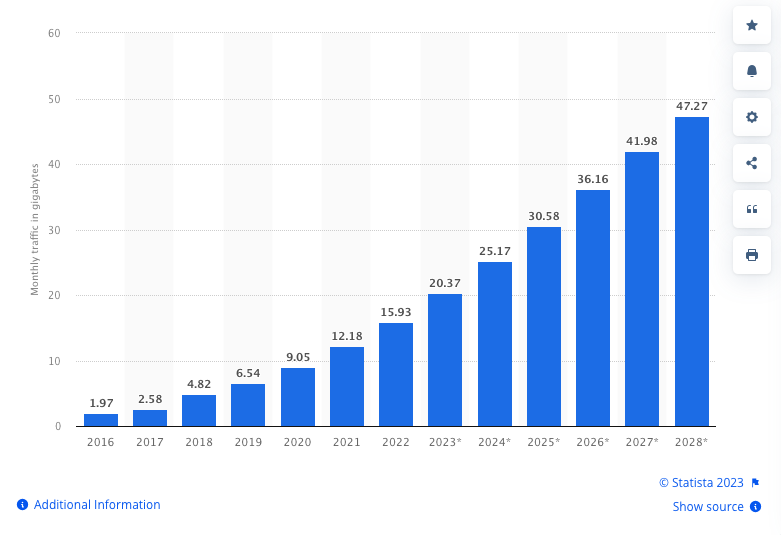
App Store Optimization (ASO) is a strategy to improve the ranking of mobile apps in app store search results. It is similar to SEO for websites but is exclusively designed for applications. The goal is to increase awareness, encourage more mobile device downloads, and ultimately boost revenue.
There are two fundamental ways to maximize an app’s visibility in the app store:
- Metadata Improvement for the App: This involves optimizing the app’s title, description, keywords, and screenshots. By tweaking these elements, app owners can enhance the likelihood that consumers will discover their app.
- Increasing the App’s Ratings and Reviews: Positive reviews can significantly influence the app’s reputation and visibility. Additionally, responding constructively to negative comments fosters brand loyalty and signals to potential customers that you value their feedback.
In essence, what SEO does for websites in Google’s search results, ASO focuses on making your app more visible and attractive in app stores. It’s all about raising awareness of your software, encouraging more downloads, and ultimately, increasing revenue.
If you want to enhance the visibility of your software in the App Store, we have some useful tips for you:
- Rock Those Keyword-Rich Titles: The title of your app is pivotal for App Store Optimization (ASO), so make sure to include relevant keywords. This makes it easier for users to discover your software.
- Improve Your Descriptions by Including Keywords: The description of your app is as crucial to ASO as the title. Therefore, while crafting an informative and enticing description, sprinkle in those relevant keywords.
- Utilize Relevant Keywords: To increase your app’s visibility, fill out the keyword field with pertinent search terms. Always use keywords that are genuinely relevant; avoid cluttering your content with them.
- Promote Favorable Reviews: Encouraging users to post positive reviews can enhance the rating and visibility of your app. Consider offering incentives like discounts or promo vouchers to encourage consumers to share their experiences.
- Picture-Perfect Screenshots: The screenshots of your app serve as users’ first impressions. Select high-quality images that accurately depict the features and capabilities of your program. This significantly impacts attracting potential consumers.
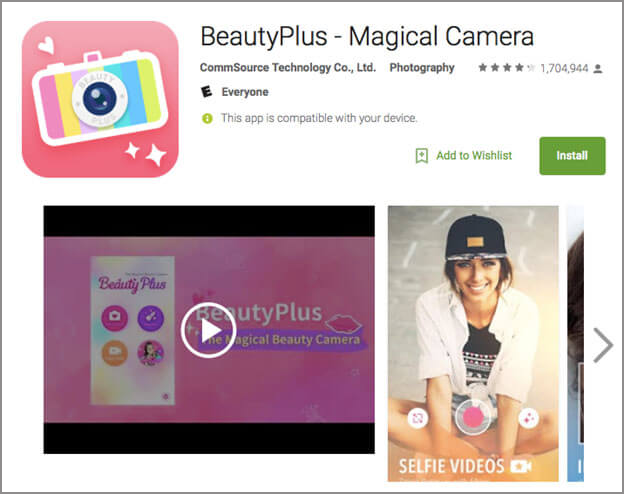
There you have it! By following these tips, you can optimize your app’s appearance in the App Store.
Here are some essential points to remember regarding the policies for the Google Play and Apple iOS stores:
Google Play Store Guidelines:
Step 1: Understanding Google Play Guidelines
- Note that the rules apply to both the Google Play and Apple iOS stores, but pay special attention to the Google Play guidelines.
Step 2: Titles and Descriptions for Google Play
- Explain the character limits for the title (30 characters), short description (80 characters), and full description (4,000 characters).
- It’s important to note that Google Play indexes most of the text in the store listing.
Step 3: Summary and Request for Additional Assistance
- Summarize the Google Play guidelines and invite the user to ask additional questions or seek further assistance.
Apple (iOS) App Store Rules:
Step 1: Transition to Apple (iOS) App Store Guidelines
- Note that the rules apply to both the Apple iOS and Google Play stores, but focus on the rules for the Apple (iOS) App Store.
Step 2: Title and Subtitle for the Apple (iOS) App Store
- Introduce the subtitle field (also up to 30 characters) and describe the title’s character restrictions (up to 30 characters).
Step 3: Apple (iOS) App Store Keywords
- Mention that the Apple (iOS) App Store has a keywords box and specify the character limit of the keywords field (up to 100 characters).
Step 4: Extra Keyword Fields in the Apple (iOS) App Store
- In contrast to Google Play, clarify that not all text fields are indexed by the iOS App Store.
- For better discoverability, suggest using the developer name and in-app purchases (IAP) sections to include significant keywords.
Start Optimizing Your Content Now
Many people mistakenly believe that SEO is all about creating an abundance of content, chasing new keywords, and building links to improve rankings.
However, seasoned SEO experts understand that content optimization is a more sophisticated strategy to increase organic traffic. It essentially involves optimizing your existing content to enhance its performance.
Content optimization primarily focuses on modifying the on-site meta tags of your pages. It is crucial to ensure that your primary and secondary keywords are present at the appropriate densities and fall within the optimal range. Naturally, the word count should be precise.
Moreover, readability is vital, so it is imperative to ensure that your content is easy to read and understand. Most importantly, your meta title and description tags need to be flawless.
So, here are four simple and effective methods to implement content optimization across your entire website.
Discover the Right Word Counts and Keyword Usage
Search Engine Results Pages (SERPs) can exhibit a great deal of diversity. For instance, when you pose a question, the answer appears promptly in an intriguing highlighted snippet. Conversely, there are instances where a sales page of 500 to 1,000 words is essential to communicate all the requisite information. Moreover, certain intricate queries necessitate extensive articles exceeding 3,000 words.
There is no definitive rule for word count as it is entirely contingent upon the specific search query and the pages that rank the highest. Nonetheless, if you miscalculate this aspect, attaining a high ranking becomes exceedingly challenging.
Improve Clicks With Meta Title Testing
Are you aware of title tags—the concise text segments displayed at the top of web pages? They are crucial for page optimization. However, meta descriptions do not carry the same importance. Although Google does not use them for ranking determination, it does not imply they should be neglected.
In reality, a well-crafted meta description can boost your click-through rate (CTR). What does that imply? A higher CTR can lead to improved rankings for your page, creating a chain reaction.
Imagine you are online, searching for the best local pizza places. You might expect the second result on the page to be more popular and receive more clicks than the fourth result. However, Rand Fishkin, who addressed this topic in a Whiteboard Friday episode, argues that the situation is not always so straightforward.
Fishkin proposed an intriguing idea: “What if the second result gets more clicks than the fourth result, which is lower on the page? Shouldn’t they switch places?” This is a compelling concept.
Interestingly, other reputable sources, like CXL, have also discovered that CTR influences search rankings. Consequently, search engines like Google may consider promoting a lower-ranked result if it attracts more user engagement and clicks.
In summary, a website’s position on a search results page is not the only factor at play. Rankings can be affected by CTR, making it vital to craft engaging and persuasive meta descriptions to increase clicks and potentially improve your search results position.
Find Pages With Decreasing Traffic Using Content Decay
As you continuously create new content, your older content will inevitably lose traffic and rankings. It’s a natural occurrence—your articles become outdated, your competitors are consistently updating their content, and you may even delay building new links. Juggling the task of maintaining everything while venturing into new territories is a challenging feat.
However, here’s a piece of advice: one of the most straightforward strategies to stay ahead and maximize the potential of your older (yet still valuable) content is to manage the decline in traffic. This will enable you to determine where to allocate your resources—whether it’s worth updating existing blogs or creating entirely new content. Striking the right balance is key!
Answering Questions Relevant to Your Search
In the search engine results pages (SERPs), the “People Also Ask” and “Related Searches” sections are invaluable for understanding what users are searching for.
Suppose you aim to rank higher in the search results for the term “content optimization.” In that case, you might contemplate creating a comprehensive tutorial on the topic akin to the one you’re currently reading. However, here’s an interesting idea: why not answer the questions listed under “People Also Ask”? This could increase your visibility in voice-assisted searches, which are currently on the rise.
Another tip is to examine the “Related Searches” section located at the bottom of the SERPs. This can offer insightful suggestions for segments of your article, serving as a hidden treasure trove of ideas.
The “Research” tab for each topic will display a list of additional questions people are searching for if they wish to delve deeper. This will equip you with even more knowledge to craft your article comprehensively.
Creating a Perfect Website Experience with Core Web Vitals
On-page optimization was once overlooked by SEO professionals, who deemed it less important than traditional on-site optimization and link building as a ranking factor. However, the SEO landscape is rapidly evolving. To make its search engine more human-like, Google has implemented BERT and MUM.
Interestingly, their ranking algorithm now heavily depends on on-page optimization. To stay ahead in the SEO game, it is crucial to understand the evolving importance of website optimization.
While tags and links remain important and will continue to be so in the future, it is no longer advisable to focus solely on them. This new metric has been a crucial part of Google’s algorithm since the introduction of the Page Experience Update in 2020. Therefore, if you want to stay ahead in the SEO game, you must pay attention to on-page optimization.
Here’s the deal: Page experience, according to Google, encompasses how users interact with a website and includes more than just the content it provides. Here’s the interesting part: Despite the potential of Elon Musk’s Neuralink to change things in the future, Google currently requires a more straightforward method to determine how users genuinely feel about a web page. Hence, they base their assessments on four indicators that they believe are associated with a positive page experience.
Core Web Vitals is the first metric that essentially indicates how quickly a webpage loads and how users interact with it. Let’s break them down:
- The first one, Largest Contentful Paint (LCP), measures how quickly a page’s main content loads. Once the page starts loading, Google recommends aiming for an LCP of under 2.5 seconds.
- Next is the First Input Delay (FID), which measures how quickly a page becomes interactive. Again, Google recommends keeping the FID under 100 milliseconds for a positive user experience.
- Lastly, Cumulative Layout Shift (CLS) examines the visual stability during page loading. For a seamless browsing experience, Google recommends aiming for a CLS score of less than 0.1.

The remaining three metrics include the mobile-friendliness of a page, the absence of intrusive interstitials, and the implementation of the HTTPS protocol.

Here are some steps you should take if you haven’t paid much attention to your page experience:
- Check your website’s performance against the Core Web Vitals by using PageSpeed Insights. This will show you how well your page is performing. Pay attention to the suggestions Google provides below the fold to address any issues you may find; they can help improve your website.
- Evaluate your website’s responsiveness with Test My Site. This is an effective way to determine how well your website performs on mobile devices.
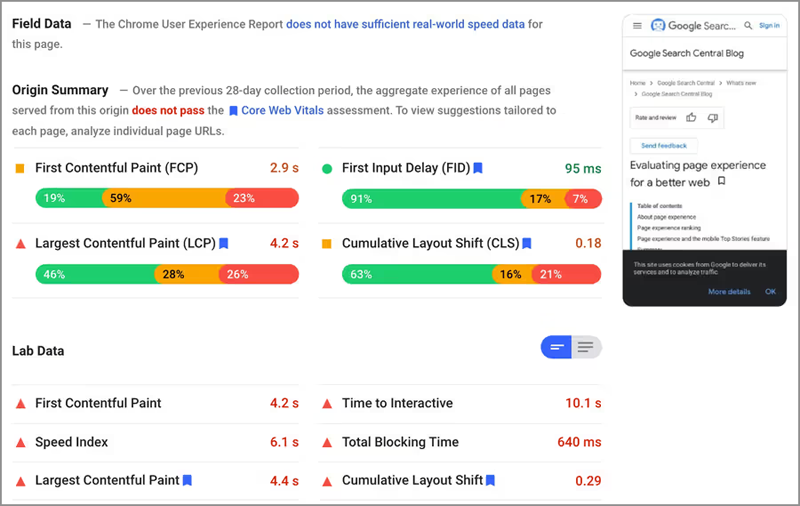
Below are some tips for increasing page speed, which will improve rankings and boost conversions:
- Reduce unnecessary code on your page.
- Delay the loading of JavaScript.
- Speed up the server response.
- Choose a hosting solution based on your needs.
- Enable browser caching.
- Turn on compression.
- Compress images to reduce page size by 30% to 40%.
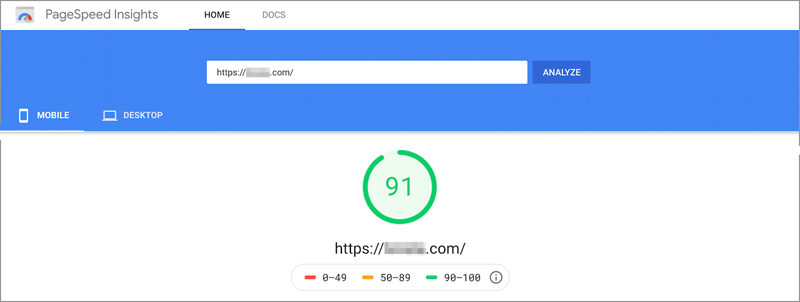
After improving your website’s speed, ensure it also meets the following three essential criteria:
- Mobile-friendliness is a must.
- Obtain an HTTPS certificate for your domain.
- Avoid pop-ups that open new tabs or windows, although those used for email list building may not be problematic.
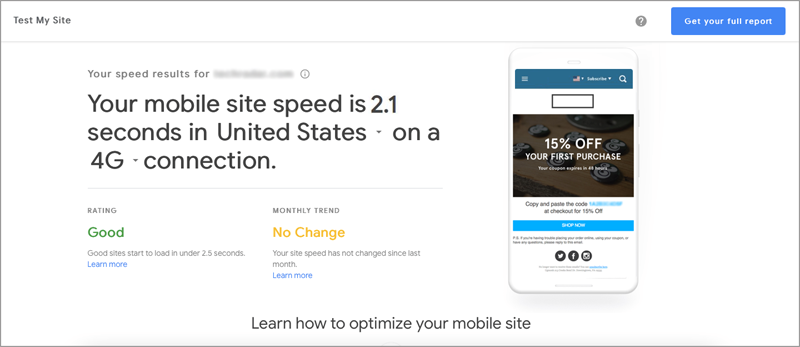
Boost Your Dwell Time
The influence of user experience on Google’s ranking algorithm has been a subject of debate among SEO professionals for a long time. Although having a well-structured website, fast loading time, and mobile-friendly design are essential, until recently, these factors had little impact on rankings.
However, Google, being the all-knowing entity it is, decided to shake things up by making dwell time a key factor in its ranking criteria. Dwell time is the duration a visitor spends on a website after clicking a link on a search engine results page (SERP) before returning to the SERPs.
Let’s illustrate with an example:
Suppose a user searches for “best hiking trails” on Google and finds a page that interests them. They click on it and spend a good 5 minutes reading the content before returning to the SERPs to explore other pages. In this case, their dwell time would be 5 minutes. This duration may not seem significant to you or Google by itself. However, if Google notices that visitors tend to spend more time on our page compared to our competitors’ pages, it will likely conclude that our page offers a better experience.
Google rewards pages with higher dwell times over their competitors because it wants to satisfy its users. Although the exact weight of this factor is unknown, it could be the deciding factor for ranking at the top for a highly competitive keyword.
It’s important to clarify that dwell time and bounce rate are not the same. Bounce rate is the percentage of visitors who land on a page and immediately leave without interacting. Some bounces come from Twitter traffic, while others come from direct sources like bookmarks. It’s like different flavors of ice cream.
The difference between dwell time and time on site is that the latter includes visitors who found your website through channels other than the SERPs. While bounce rate and dwell time are similar, dwell time is more SEO-friendly.
Unfortunately, there isn’t much you can do directly to increase your dwell time apart from improving your user experience. If you make your website more user-friendly, your dwell time will likely increase. Conversely, if your site appears unreliable, outdated, or unprofessional, new visitors are likely to leave and click on another result, which Google won’t appreciate.
Now that you have a solid understanding of dwell time, let’s explore some SEO strategies to improve user experience and increase the visibility of your existing content on search engines.
Creating Readable Posts
Focusing on readability optimization is crucial for enhancing your organic results. It’s not just about appearance; it’s also about making your content easily understandable for your audience.
Here are some tips to improve your content’s readability:
- Prioritize High-Quality Material: Quality content is paramount. While formatting is important, so are great ideas, engaging delivery, and error-free grammar and spelling. Ensure every aspect of your content is perfect.
- Limit Paragraph Length: Aim for paragraphs that are three to four sentences long. Occasionally, one-sentence paragraphs can be used to emphasize a point, but don’t overuse them.
- Vary Sentence Lengths: Long sentences can be hard to follow on a computer or mobile device. However, when used judiciously and mixed with shorter sentences, they can be effective. This variety in sentence length can enhance your material’s readability and engagement.
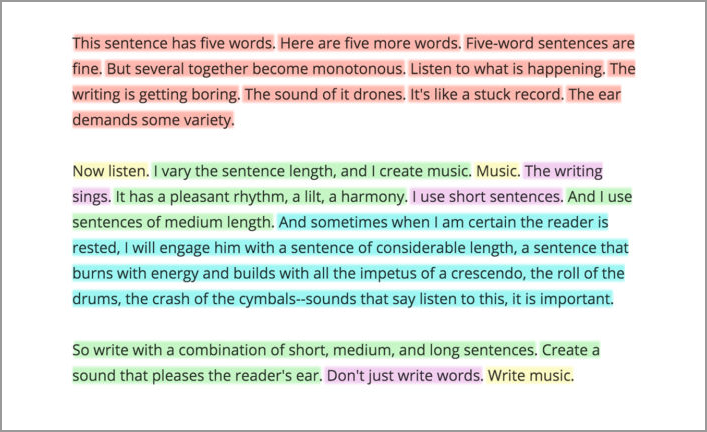
- Use Subheadings: The average online reader spends only about 37 seconds per article, so it’s essential to capture their attention quickly. Subheadings help readers skim your text more easily and understand its content faster. They also act as signposts, guiding readers and helping them find the information they seek in your piece.
- Incorporate Bullet Points: Whenever you have a lot of information to share, such as statistics, facts, concepts, or examples, use bullet points. They make it easier for readers to absorb and understand the information. As a general rule, use bullet points if you have three or more items to list.
- Utilize White Space: Make good use of white space and include relevant supplementary materials, such as images, videos, and graphs, to enhance readability. These visuals, along with bullet points and subheadings, break up long blocks of text and add context.
- Include Photos and Screenshots: Incorporating photos or screenshots in articles is crucial as they illustrate ideas and enhance content appeal.
Use the Inverted Pyramid Style of Writing
Journalists often use the inverted pyramid writing style to create engaging and informative stories. This style reverses the traditional narrative structure, which typically involves a gradual buildup of the main idea.
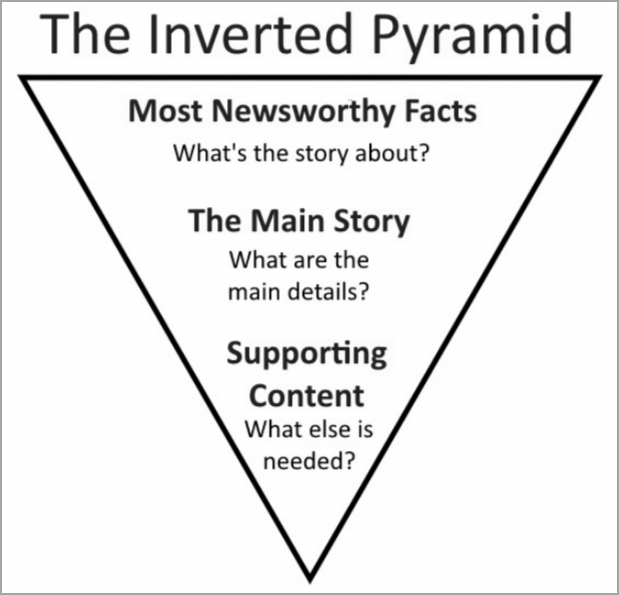
In the inverted pyramid style, the most important details are presented in the opening paragraphs. This way, readers can quickly grasp the central concept and key elements without reading the entire piece.
Think of it as a strategy to captivate your audience immediately. By placing the most compelling elements at the start, you can capture their attention and encourage them to continue reading. This is especially important in today’s fast-paced world, where people have limited attention spans.
Even if someone only reads the first few lines, they will still comprehend the essential points because of the inverted pyramid style. Additional details and background information are provided in the subsequent paragraphs, but the fundamental concepts have already been addressed.
It’s an excellent approach for effectively and efficiently conveying information. So, try it out and see how it can enhance the readership and engagement of your content!
Use Topic Clusters, Not Keywords
Google is continuously evolving and becoming more proficient. It is crucial in today’s world to understand what users genuinely want when they search. Google is interested in knowing what users expect, what they are looking for, and—most importantly—which search results will provide the most useful information.
This is where the featured snippet box comes into play. It plays a significant role in enabling Google to deliver those excellent responses.
However, the challenge is that merely stuffing your website with keywords is no longer sufficient to magically land you on Google’s front page. It’s not that simple anymore. You need to look beyond keywords and understand the context in which they are used. This is referred to as “user intent.” You must be aware of what your users are actually looking for.
So, here are a few things you should keep in mind:
Know Your Target Audience
It’s essential to consider your audience when creating content. You should craft material that addresses their needs and preferences, taking into account factors like their location, age, and interests. The more you understand your audience, the better your content and SEO will be.
If you don’t have a clear idea of your target audience, you risk creating content that attempts to address too many issues at once. A single piece of content trying to cater to a wide range of interests will never satisfy everyone; therefore, this approach won’t help you rank higher in search results or attract readers.
On the other hand, if you develop buyer personas that represent the common characteristics of your ideal customers, you can focus on topics that genuinely interest your readers. This approach increases your chances of creating content that resonates with your target audience while minimizing the risk of producing content that falls short of expectations.
Organize Content into Clusters

Instead of focusing on individual keywords, enhance your content strategy by organizing your material into topics. Leverage HubSpot’s effective topic cluster approach to connect relevant content pieces, increasing visibility and user engagement.
The objective of the topic cluster model is to group related pieces of content into what are called “clusters.” Let me break it down for you:
Let’s now discuss cluster content. These are the pages that revolve around your pillar page and are linked to it. They delve deeper into specific subjects or provide more detailed answers to questions on the main page.
For example, if your pillar page is about clothing, your cluster content could include articles on current fashion trends, styling tips for various outfits, or advice on eco-friendly fashion. These cluster pieces help to enhance the authority and relevance of your pillar page while also providing your visitors with valuable information.
By using the topic cluster concept, you can create a network of related content, which improves the user experience and boosts your website’s search engine visibility. It is akin to weaving a web of knowledge around your pillar pages, increasing traffic to them, and establishing your authority in your field.
Therefore, to optimize your online presence, consider grouping your content into topics and employing the topic cluster model rather than merely focusing on individual keywords.
Suppose one of the main subjects on your cooking website is “Italian cuisine.” You can break it down into subtopics like pasta dishes, pizza recipes, and dessert specialties to form a topic cluster around this.
Now, what makes this tactic effective? Well, it accomplishes the following:
- Satisfies User Intent: By organizing your content into topic clusters, you make it easier for visitors to find more detailed information on their specific area of interest. For instance, if someone wants to find pizza recipes, they can easily navigate to the pizza cluster page and browse a selection of delicious options.
- Enhances Website Authority: Your website becomes a comprehensive and valuable resource for those key themes when you develop topic clusters. Moreover, since search engines like Google aim to direct people to the most useful and relevant pages, they place high importance on this. Therefore, Google is likely to reward your website with higher rankings in search results when it recognizes, for example, that it is an authoritative source on Italian cuisine.
- Increases Targeted Site Traffic: Each of the cluster pages you create can rank on its own in the search engine results. Therefore, if a user searches for a specific pasta dish and your pasta cluster page appears high in the results, it may lead to more relevant traffic to your website. This means that more internet users interested in Italian cuisine will find and engage with your content.
By utilizing topic clusters, you can meet user needs, position your website as an authoritative resource, and attract more specific visitors to your food website. This approach benefits both your audience and search engines.
Choose the Right Keywords
You might be wondering why we’re discussing keyword research as an SEO strategy while highlighting the importance of topic clusters rather than individual keywords. The truth is keywords are still very important.
Although the topical organization of your content is crucial, it would be a mistake to entirely disregard keywords. In fact, keywords act as guideposts for Google’s search engine spiders, giving them valuable insights into the subjects and content on your website. By conducting keyword research, you can identify who is searching for the topics you want to write about. This information makes it easier to craft blog posts or other types of content that directly address the specific questions of your audience, thus increasing your business’s visibility.
Let’s now discuss a few useful tools you can use to access keyword data:
- Moz’s Keyword Explorer: This comprehensive tool covers almost every aspect of keyword research. It allows you to generate keyword ideas, create keyword lists, and filter the results topically. You can also analyze metrics, click-through rates, and other performance indicators. Additionally, you can use it to monitor your competitors’ websites and study the terms they use.
- SEMrush: Recognized as one of the leading SEO analysis tools, SEMrush offers a plethora of business intelligence features. By simply typing their URL into the SEMrush search field, you can discover and analyze the keywords your competitors use to gain a competitive edge in the market.
- Ahrefs: Ahrefs provides a range of solutions, such as position trackers, content explorers, and backlink checkers. For this discussion, we’ll focus on their Keywords Explorer. With access to approximately 7 billion keywords across more than 170 countries, you can analyze crucial data such as keyword difficulty, click-through rates, related keyword lists, and search volume.
Consequently, by using these tools to gain insightful information about the terms your target audience uses when searching online, you can create content that is precisely tailored to their needs.
Utilizing Semantic Keywords for Improved Performance
Let’s discuss semantic keywords now. Do you know what they are? Essentially, they are synonyms or closely related words and phrases to your core keyword. These additional keywords help search engines comprehend the context of your content and increase its relevance for specific queries.
To help you understand, let us provide an example. Suppose you are writing a piece about “healthy eating.” Some semantic search terms that may be relevant to this topic are “nutrition tips,” “balanced diet,” or “superfoods.” Notice how these additional words add context and relate to the primary keyword.
Why are these semantic keywords important? Incorporating them into your content will help you rank for long-tail keywords, or more narrowly focused search terms. You know what that means, right? It means your website will attract more organic visitors.
Let me now share a few strategies you can use to uncover these beneficial semantic keywords for your article:
First, you can start by using Google’s “searches related to” feature. Simply enter your main keyword into Google and scroll to the bottom of the page to find the results. You’ll find a list of associated searches there that you can use as your semantic keywords.
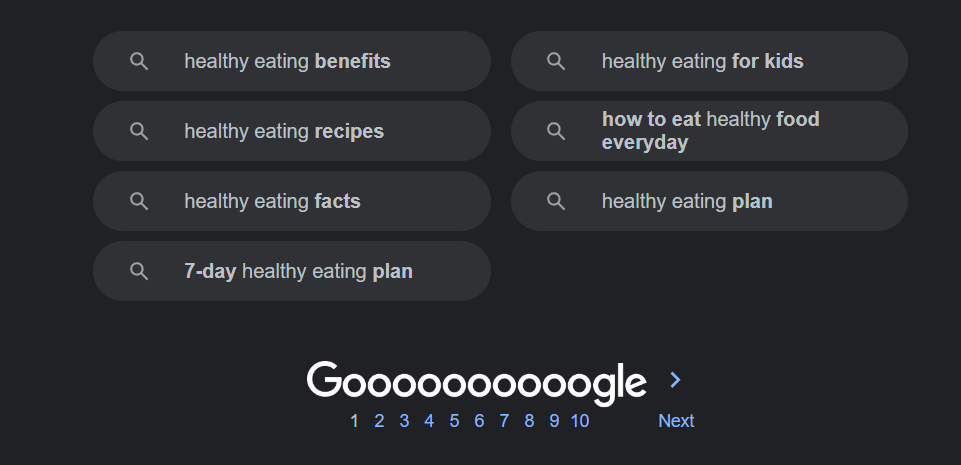
SEMrush is another helpful resource you can use. Enter your primary keyword into SEMrush’s Keyword Magic Tool. Then, by selecting the “Questions” option on the left-hand sidebar, you can filter the results. This will give you a list of queries people are looking for that are all related to your primary keyword. These queries can offer insights into the semantic keywords you should consider using in your content.
That’s the deal with semantic terms. They play a significant role in increasing your content’s visibility and attracting more visitors to your website.
Crafting Content Optimized for Voice Assistants
Do you know how sometimes your writing style differs depending on whether you’re working or chatting with friends on WhatsApp? The same holds true for Google searches. We don’t typically search differently than we speak.
Things have changed, though, with the introduction of voice assistants. There are presently over 4.2 billion voice assistants in use globally, and that figure is predicted to double by 2025. As a result, how we search has become more natural and conversational as more people use voice search.
Your website has to be voice search optimized in this new era of conversational search engines. Here is how to go about it:
Use Long-Tail Keywords for Better Results
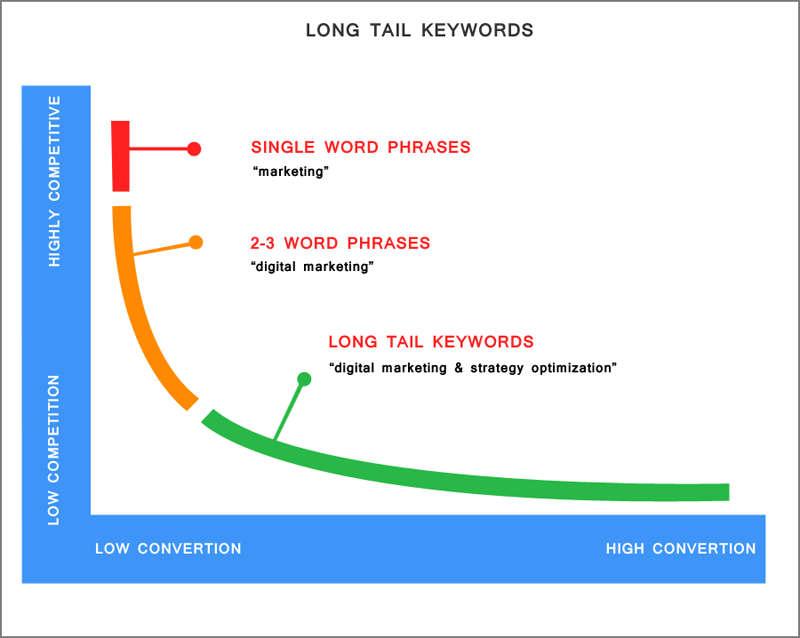
Long-tail keywords are essential to consider if you want your website to rank higher in voice searches. These are phrases that include three words or more. Let me explain how to approach this in more detail:
First, find a long-tail keyword. For example, consider that you wish to focus on “how to bake a delicious cake.” You can start from there.
Now, it’s time to dig deeper. Look for additional baking-related phrases, such as “cake baking guide” or “best ingredients for baking a cake.” Obtain a lot of these semantically similar keywords.
The next stage is to produce some great content.
Create a thorough blog post that discusses every facet of cake baking. The trick is to ensure that these semantically relevant keywords are naturally incorporated into the text as a whole. But don’t cram them in there haphazardly. That won’t help you at all.
By following this procedure, you will boost your chances of ranking higher in voice search. Anyone searching for cake-baking instructions on voice assistants may come across your fantastic blog page. Maybe I should start cooking!
Use Structured Data
Did you know that, according to Backlinko, highlighted snippets account for over 40% of voice search results? It’s rather fascinating. By utilizing structured data, you can significantly improve the chances that your content will be chosen over that of your rivals to respond to voice queries.

Structured data provides more information about your content in a language that search engines can easily comprehend. As a result, your material is more likely to be chosen as the voice search result because it helps search engines understand the context and relevance of your content. By integrating structured data on your website, you’re essentially helping search engines deliver your content to voice search users.
Imagine someone searching for the best chocolate chip cookie recipe using voice search. If your website has structured data that clearly identifies your recipe as the most pertinent and instructive, your content has a better chance of being included as the voice answer compared to your competitors, who might not have used structured data.
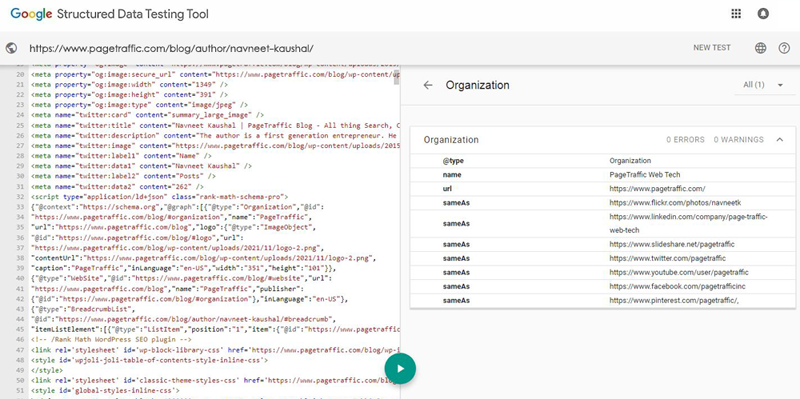
So, spending some time implementing structured data will be worthwhile if your goal is to optimize your content for voice search and increase your chances of becoming the go-to answer. To stay on top of voice search and ensure that people using voice assistants to find information hear your valuable material, adopt this sensible approach.
Improve Your Headings: Beyond Just Title Tags!
You won’t believe the commotion that erupted in the SEO community when Google pulled a surprise move and unveiled the “page title update.” It sounded like a collective gasp was followed by a frantic cry to the sky from SEO professionals, “Why Google? Why?!”
Even though Danny Sullivan and other industry insiders sought to reassure us that this wasn’t a brand-new practice, the community was nonetheless shocked. People initially reacted to the development with a mix of confusion and skepticism, unsure of what it would entail in the long run.
Then, on August 24, 2022, Google finally spoke up and provided further information regarding the change to web page titles. They clarified that their new method aimed to produce titles that would better characterize documents as a whole, regardless of the individual query.
Peter J. Meyers from Moz examined the search engine results pages (SERPs) for a staggering 10,000 keywords on August 25. He found that 33,733 of the 57,832 title tags had been changed. That’s an impressive 58%!
Now, you may assume that a sizable number of these rewrites was merely the result of Google naturally trimming excessively long titles. And to some extent, that is accurate. However, Google’s unique methods also claimed a significant number of innocent victims.
It is safe to say that this page title change has caused a wave of apprehension and worry among SEO experts. The fallout is still being felt as people consider the implications and determine the best responses to this unexpected turn in the ever-evolving SEO landscape.
In light of this, Brodie Clark claims that Google is changing how titles are displayed. They are now considering additional elements besides title tags, such as header tags, internal links, image alt text, or even coming up with their own titles.
As with most SEO-related matters, it’s difficult to foresee with certainty when and how Google may change how your title tags are shown. However, they did give us some suggestions about the types of tags they’re likely to change in their most recent update. Therefore, Google may decide to make some changes if your title tag is too long, overstuffed with keywords, missing entirely, or contains repeating “boilerplate” text, like utilizing “Home” as the title of your home page.
But don’t worry excessively! Google is here to ease your worries. They provided some suggestions for website owners, advising them to concentrate on producing fantastic HTML title tags. They still use them more than 80% of the time when creating titles, making them their primary source of inspiration.
Revitalize Your Old Content: Give It a New Purpose
Do you struggle to muster the motivation to write a lengthy blog post? Instead of starting from scratch, why not expand an existing page? For example, imagine you have a piece that is about 1,500 words long; you can improve it significantly by adding more material and expanding it to about 2,500 words.
Working with pre-existing content has many advantages, including the fact that it already has some authority and perhaps even a loyal readership. Without having to go through the hassle of starting from scratch with a new post, you can improve its performance in search results by updating it with additional information and content. It’s a win-win scenario!
How to update content? There are a few essential elements to consider. Prioritize time-sensitive topics first because they are constantly changing, such as SEO. By upgrading in these areas, you can keep your information current and ensure people find it valuable.
Second, focus on articles that have the potential to attract even more readers despite already having some organic traffic. These are the gems that would benefit most from new content.
You can explore Google Analytics to learn how many visitors your content attracts. Navigate to Behavior > Site Content > Landing Pages to access this area. Once there, be sure to switch the segment you’re viewing to “Organic Traffic.”

Now, type “/blog” into the search field to filter the results and see only the traffic to your content located in the /blog subfolder of your site. The effectiveness and potential of your current posts will become more evident to you as a result.
Therefore, you can capitalize on your content’s authority and audience while increasing its visibility in search results by extending and updating it. It’s a clever method for increasing the impact of your blog entries without having to start from scratch each time.
Make Videos and Maybe Start a YouTube Channel
Incorporating video content into your website is a highly effective strategy if you want to extend visitors’ stays. We’d like to share a fascinating Biteable survey highlighting the advantages of using video in marketing.
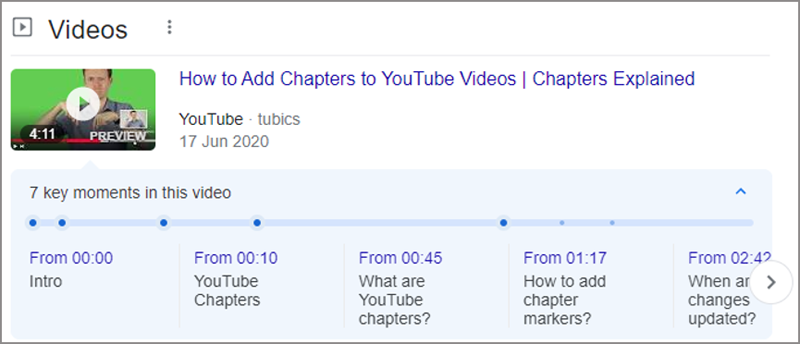
The poll found that a staggering 60% of organizations already use video as an effective marketing tool. And it makes sense why! Stunningly, 74% of marketers believe that video content offers a higher return on investment than still images. Additionally, it’s a fantastic way to attract and retain the interest of your audience.
Video not only increases engagement but also significantly contributes to gaining the trust of potential clients. In fact, according to 52% of marketers, video content helps build the essential trust element. A product or service has a more personal touch and greater credibility when genuine people are seen and heard praising it.
That’s not all, though. There is also another fascinating advantage that video offers. The Suggested Clips area on search engines like Google might help generate more organic traffic for your website. Previously, only YouTube videos were ranked in this section. But now, with the release of the new Seek and Clip data structures, advertisers can have films from any website rated and highlighted.
Additionally, the videos you create can be used to build your own YouTube channel. Consider the potential reach! With 2.3 billion monthly active users, YouTube is the most popular video site on the Internet. Every day, these people watch a mind-boggling 1 billion hours of video content. Furthermore, YouTube is more than just a video platform; it is also the second-most popular social media network and website overall.
As a result, by including video content in your marketing strategy, you enhance visitor engagement and trust and take advantage of the sizable user base and opportunities for organic traffic offered by websites like YouTube. Your company will benefit from it in a positive way!
Don’t Forget About YouTube Search Engine Optimization
YouTube is the world’s second-largest search engine, so optimizing your videos is crucial if you want to reach a broad audience. Remember, optimization isn’t just for Google. Both YouTube and Google can drive organic traffic to your website.
Here is a method to optimize your YouTube videos for both Google and YouTube: Identify a keyword that triggers YouTube videos to appear in Google’s search engine results pages (SERPs). If a keyword appears in Google search results, it indicates that you can rank for it on both search engines. Seize this opportunity to broaden your audience and enhance your visibility.
Suppose you run a fitness channel. You could perform a Google search for a term related to fitness to see if any videos appear in the results. If so, you should know that optimizing your video based on that keyword can help you rank higher on both Google and YouTube.
To optimize your videos, include relevant keywords in your video’s title, description, and tags. For example, if your video is about an exercise regimen, include terms like “exercise routine,” “fitness workout,” etc. You can get keyword suggestions for Google and YouTube using tools like Keywordtool and Ahrefs.
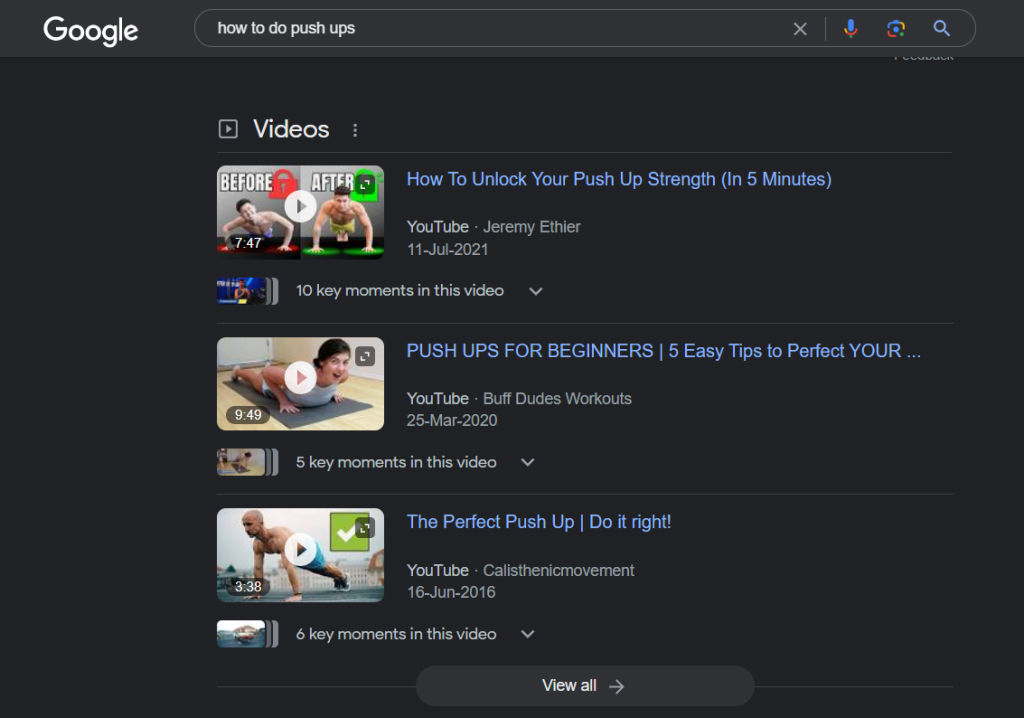
Another helpful strategy is to create transcripts of your videos and post them on your website. This not only makes it easier for searchers to find your videos but also helps Google index your video content.
Use tools like VidIQ and TubeBuddy to increase your YouTube audience and subscriber count. These tools offer various features and insights to enhance your videos and reach a broader audience.
Here are some straightforward tips for optimizing your YouTube videos for SEO in 2025:
- Include relevant keywords in your video’s title, description, and tags.
- Create video transcripts and post them on your website.
- Share links to your videos via email, social media, and other websites.
- Consider using YouTube advertisements to reach a broader audience.
- Ensure your videos are of high quality to keep viewers engaged.
- Optimize your videos for both YouTube and Google platforms.
- Use cards and annotations in your videos to add more information or links.
- Create a compelling call to action that encourages users to subscribe, like, or take another action.
- Use captivating thumbnails to attract viewers and encourage them to click.
- Conduct keyword research to identify popular and relevant topics for your videos.
By following these tips, you can enhance the SEO of your YouTube videos and increase your chances of ranking higher in search results. Don’t forget to promote your videos on other platforms like social media, email, and other websites to maximize your audience and exposure.
Also Read: Optimize Your Channel for YouTube Algorithm in 2025
Invest in Your Content and Backlinks
Google’s ranking algorithm has always placed a high priority on link building. And, when it comes to acquiring backlinks at scale, content is arguably the best approach.
Think of producing content as an investment. In the past, companies invested in radio, newspaper, and magazine advertisements (and many still do). They also spent money on trade fair booths, billboards, and pamphlets.
The same principles apply to content marketing. Invest in developing in-depth, valuable, and unique content that addresses your visitors’ needs. We’re not talking about short, 500-600 word articles here. We’re talking about the creation of data-driven content.
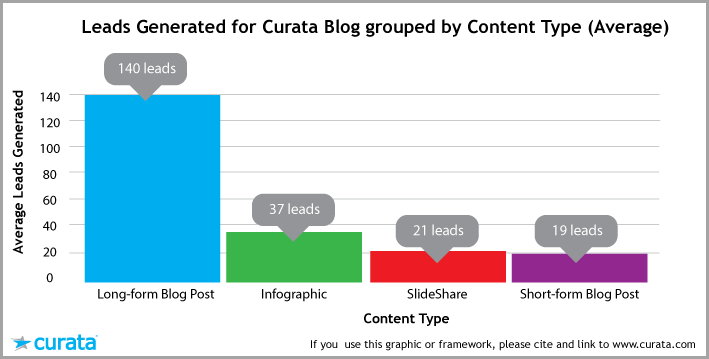
Data-driven content is based on information gathered through quantitative or qualitative research. This research can be conducted by the content creators themselves or by a team of researchers. Articles that combine personal experience with scientific research and data provide authoritative solutions to readers. This type of content not only boosts visitor engagement but also helps in acquiring more backlinks.
To further enhance your data-driven content, consider using visuals and graphics that illustrate the information mentioned. Research has found that when statements about a new treatment are supported with graphs and other statistics, people are more likely to trust them—even if the data doesn’t add any additional information to the claim.
Enhance the Visual Appeal of Your Content
Visual content naturally attracts people; we are instinctively drawn towards it. On Facebook, posts with images receive a staggering 230% more engagement than those without visuals, clearly demonstrating this phenomenon. It seems that when there is something visually appealing to capture their attention, people are more likely to click, like, and share.

However, the benefits of visual content extend beyond social media. Websites also experience a significant increase in views when using images. Surprisingly, pages with visual elements receive 94% more views. It appears that visuals capture our attention and stimulate our curiosity about the rest of the page.
Certain types of images are particularly effective at attracting links. People are more likely to notice and link back to your content when it includes graphics, infographics, photographs, and GIFs. Fortunately, creating visually appealing graphics doesn’t require you to be a skilled designer.
Tools like Canva make it relatively easy to create beautiful images. Alternatively, you can also hire reasonably priced freelance designers from websites like Fiverr and Upwork.
Another great advantage of using images is that they are appreciated for the effort you put into creating them. People are more likely to provide you with inbound links when they notice that you have taken the time to create engaging and aesthetically pleasing content. Additionally, by optimizing your images, you can improve your ranking on Google Images, the world’s second-largest search engine. It’s a win-win situation!
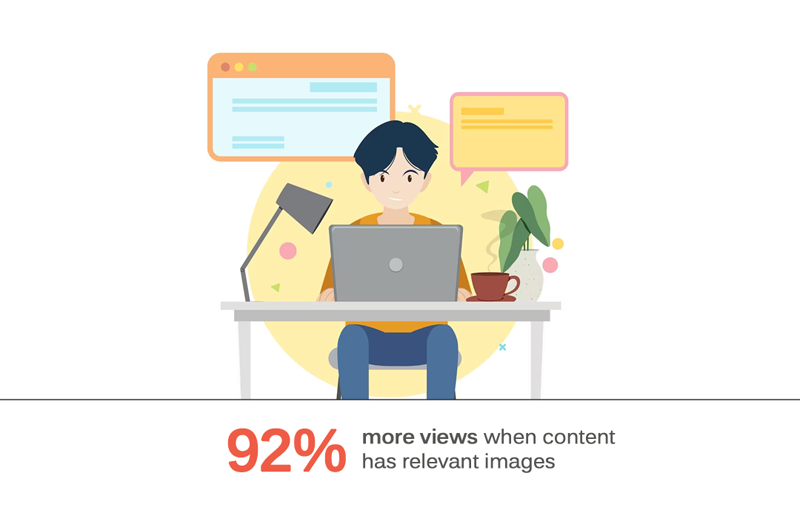
Two critical considerations for search engine optimization (SEO) of your images are the alt text and the image name. Think of the alt text as a label that you attach to your images to help Google’s crawlers understand the content of the images. It’s like giving them a brief description and a keyword to help them interpret the image’s content. For example, if you have a picture of a beautiful beach sunset, you could use alt text like “stunning-beach-sunset.jpg” and briefly describe the scene.
Similarly, the name of the image itself is quite important. The image name should capture the essence of the picture, much like how a book cover reveals what’s inside. A suitable filename for our beach sunset example would be “serene-golden-sunset-over-ocean.jpg.” In this way, the alt text and the image name work together to provide users and search engines with valuable information about the image’s subject.
By giving your images descriptive alt text and appropriately named file extensions, you can enhance their visibility in search engine results and make it easier for visitors to find and enjoy your visual content. It’s like guiding users and search engines in the right direction with the correct images so they don’t miss the eye-catching graphics you have to offer.
Target Local Searchers: Utilize Landing Pages and Listings
Prepare yourself for some mind-blowing news! Searches for local information account for 46% of all Google queries. People are looking for nearby businesses, hours of operation, phone numbers, and addresses. If you own a physical store, addressing local SEO is an absolute must. Don’t miss the opportunity to connect with potential clients in your area!
Now, here are three effective SEO strategies for attracting new clients in your neighborhood. It’s pretty fascinating! In fact, 72% of individuals who search for local businesses on Google actually visit locations within a five-mile radius. Isn’t that an impressive statistic? So, let’s get started and ensure you’re capturing those neighboring customers like a pro!
Double-Check Your Directory Listings
Search engines such as Google and Bing are powerful, yet they cannot be everywhere at all times. That’s why they rely on local data sources for additional information.
These resources collect and compile essential data for local businesses. They obtain the information from hardcopy directories such as the Yellow Pages or by scanning business registrations. Google then employs these data aggregators to fill any gaps in its own databases. They also double-check the information to ensure it is current.
However, issues do arise from time to time. Aggregators may acquire obsolete data, causing Google to provide erroneous information. Imagine having an outdated location or a disconnected phone number displayed for your company!
Because of this, it’s crucial to ensure that your contact information is accurate across all of your web postings. Here are some areas you should focus on:
- Google My Business: If you want to increase online visibility for your company, start with Google My Business. Having a presence on Google is essential because it is the most popular search engine out there. The good news is that you can promote your company for free with Google My Business. Make sure to update your listing constantly to keep your information current. This includes crucial information like your current business hours, the number of locations you have, and the forms of payment you accept.
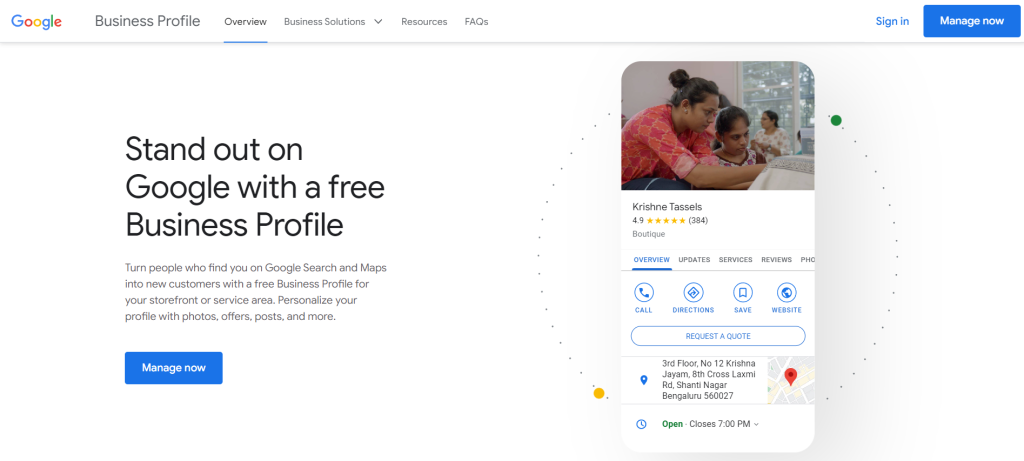
- Local Directory Management Service: Managing your company’s information across numerous local directories can be time-consuming. Fortunately, businesses like Moz Local and Yext exist that can handle this process on your behalf. They work to update any inaccurate or out-of-date information about your company by scanning several local directories and corresponding with data aggregators. This helps you save time and guarantees that your company’s information is consistent across all platforms.
- Increase the Number of Directory Listings Using Local Data Aggregators: Consider using local data aggregators like Bright Local to expand the reach of your online presence. Once your data is flawlessly arranged, you may use a local data aggregator to distribute it to numerous directories efficiently. This makes it possible for your company to be featured in several directories, enhancing its accessibility and visibility to potential clients. Using these tools and services, you can improve your online presence and make it simpler for customers to find your company.
Remember to update all of your local listings if anything changes. This is particularly crucial if you relocate your office, change your phone number, or have a holiday closure. By maintaining accurate and up-to-date information across multiple platforms, you can make it easier for consumers to find and contact your company.
Creating and Enhancing Local Landing Pages
People frequently use specific search phrases exclusive to their region when looking for local services. For instance, instead of simply searching for “SEO services,” they might search for “SEO services in Mumbai” or “SEO services in Delhi.” Similarly, someone in Bangalore may search for “best blow dry in Bangalore,” while someone in Kolkata might search for “where to buy candles in Kolkata.”
To ensure that your website appears on the first page of search results in India, you must actively target these local keywords. Creating a landing page specifically for the targeted term and region is one efficient tactic.
Here are a few examples of the top organic search results for local keywords:
“Top hair salons in Mumbai” displays a list of the city’s most popular and highly recommended hair salons, each catering to the unique requirements and tastes of its residents.
“Best candle shops in Kolkata” lists several shops in Kolkata that sell a wide range of candles.
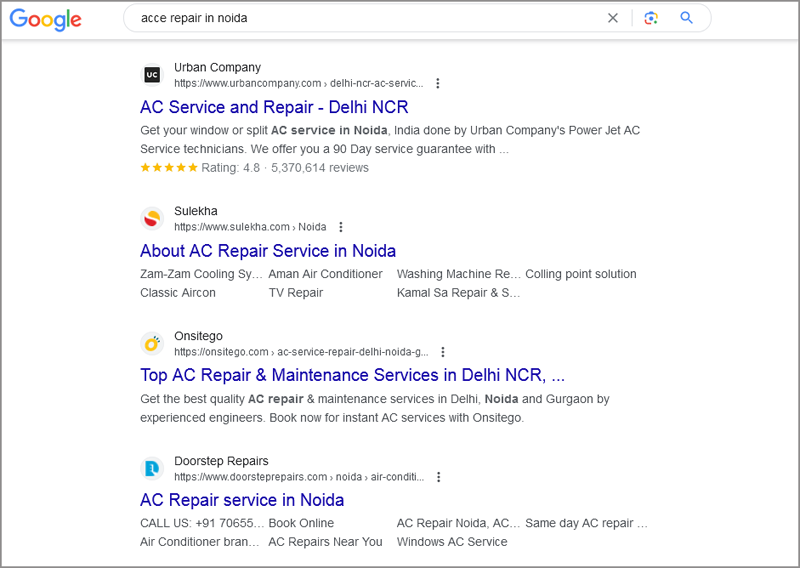
You can increase your chances of appearing on the shortlist of search engine results pages (SERPs) in India and generate more relevant traffic to your business by optimizing your website for specific local keywords in the Indian context.
Isn’t it amazing how all of the search results you receive are directly relevant to Kolkata rather than a generic homepage or a service page titled “best candle shop”? To achieve such targeted outcomes, you should consider developing dedicated landing pages. Let me guide you through the steps:
First, conduct keyword research to uncover local keywords relevant to your product or service. These are the terms that people in your area are likely to search for when looking for what you offer.
Next, create a new page on your website and optimize it for those local keywords. This includes incorporating the keywords into the meta title (the title that appears in search engine results), the meta description (a brief summary of the page’s content), page title, heading tags, image alt text, and on-site content.
In addition to on-page optimization, building links from local directory listings to your landing page is crucial. For example, if you’re targeting London, try to acquire links from London-based directories that direct to your landing page’s URL. This approach enhances your page’s ranking for location-based keywords.
Following these steps will help you create landing pages that attract search engine traffic from your local area, increasing your chances of connecting with potential customers who are seeking the products or services you provide.
Also Read: Image SEO: How to Optimize Images for Google Image Search SEO?
Optimizing Local Search With Technical SEO
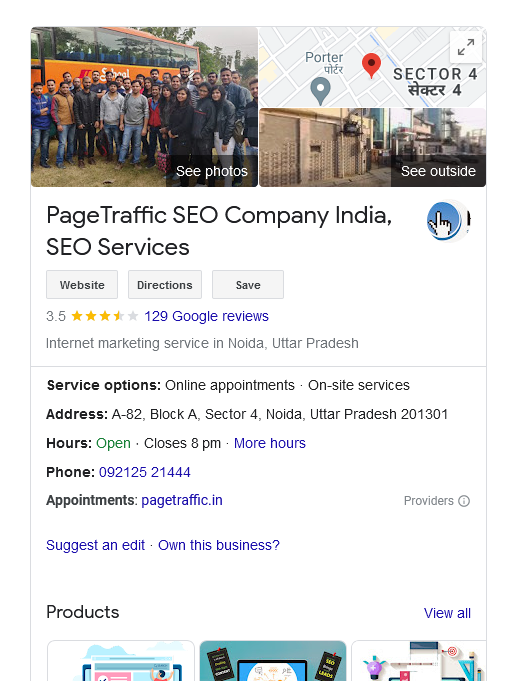
The technical SEO process is quite similar to what we discussed earlier about optimizing your business for local searches. However, some terms and strategies can be particularly beneficial in ensuring that your business maximizes its local search potential.
One practical approach is the implementation of schema markup. These are snippets of information that provide both users and search engines with additional details. Schema markups are important because they can be used without any coding experience. You can easily insert them via Schema.org, a collaborative initiative between Google, Yahoo!, and Bing.
By using schema markups, you can enhance your business listing in local search results. It allows you to display extra information about your establishment, such as hours, location, and general information, without the searcher even having to visit your website.
In summary, schema markups are an essential tool for optimizing your business for local searches. They provide potential customers with useful information upfront, making it easier for them to find and engage with your business. Therefore, it is advisable to consider using schema markups to boost your local search visibility.
If you want to step up your game, consider using Google Tag Manager to add a JSON injection. Although it may sound complex, there is a straightforward way to enhance your schema’s effectiveness, increase your click-through rate (CTR), and boost your visibility. The best part is that it doesn’t require a lot of coding.
Data organization and structuring are often done in the JSON format, which stands for JavaScript Object Notation. Combining JSON with Google Tag Manager allows you to quickly implement structured data and enjoy the benefits without getting mired in complicated coding.
Of course, there may be a slight learning curve initially if you are not familiar with JavaScript or other programming languages. However, once set up, JSON injections can streamline the execution and organization of structured data, making it a simple and effective solution.
Shifting Attention to High-Intent Keywords
Traditional marketing often starts by creating educational content that attracts and nurtures your audience at the top of the sales funnel. To some extent, this approach is still valid. However, search engine marketing offers an intriguing advantage: you don’t have to handle all of the nurturing.
Many individuals have already completed their research and are now moving toward the bottom of the funnel. Their search behavior indicates that they are almost ready to make a purchase.
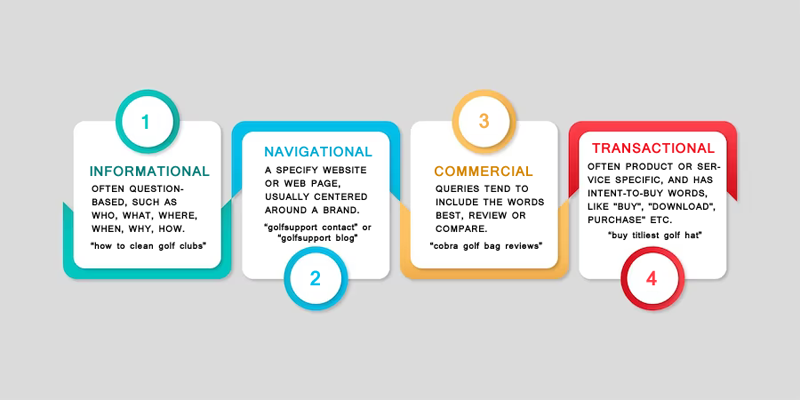
Today, we can broadly categorize search intent into four categories: informational, navigational, commercial, and transactional. However, in this context, commercial and transactional keywords are the most important. These are the key phrases that indicate a strong intent to take action.
Therefore, if you decide to focus your content efforts on these areas, you can be more assertive with your calls to action. For example, you can take a more direct approach like “get a quote” rather than a softer approach like “download this cheat sheet.” By doing this, you can expect a higher conversion rate, which translates to more people actually taking the desired action.
Moreover, by focusing on these high-intent keywords, you can more accurately measure and attribute leads and revenue to your content. This is essential if you want to manage your SEO efforts for a short- or medium-term return on investment.
Therefore, focusing on high-intent keywords is undoubtedly the way to go if you want to achieve noticeable results and a good return on your content investment. The key is to understand your audience’s search habits and meet them where they are in the buying process.
Also Read: How to Find the Right Content for Different Stages of Content Marketing Funnel?
Using E-A-T Best Practices
The acronym E-A-T stands for Expertise, Authority, and Trustworthiness in the context of SEO. Google uses it as a term to describe the process it uses to assess the authority of content and its ability to rank highly in search results. The goal of E-A-T is to promote content produced by real experts while reducing the likelihood that false sources would rise to the top.
According to Google’s Quality Evaluator Guidelines, E-A-T is applied variably based on the topic. For instance, E-A-T becomes crucial if you work in the YMYL (Your Money or Your Life) area. YMYL themes cover subjects like financial or medical advice, where integrity and reliability are crucial.
However, the criteria for determining expertise differ. For example, if you’re writing a software review, being an experienced user of that software may suffice to demonstrate your trustworthiness. The most important question to ask is whether the author has the relevant knowledge and experience to deliver valuable insights on the subject.
Now, let’s look at three practical strategies you can use to show Google and your audience that your content authors genuinely possess the necessary expertise:
Create Excellent About Pages and Author Biographies
Your “About” page and the author biography sections are prime opportunities to shine and build trust with your audience. Including a brief biography of the content author at the beginning or end of a post adds a personal touch while also highlighting their expertise. This allows readers to understand the author’s background better and appreciate their perspective, thereby increasing trust in the insights provided.
Don’t hesitate to showcase your achievements on your “About” page. Clearly explain to readers (and Google) why they should pay attention to what you have to say. It’s important to highlight official accomplishments, such as degrees or certifications, as they demonstrate your dedication to learning and mastering your field. Also, share your work history, emphasizing notable milestones or key roles that showcase your expertise.
Don’t forget to include case studies and testimonials, as they foster trust. Allow others to vouch for you through positive reviews and notable initiatives. Highlight achieved results and include examples of your writing and public speaking engagements.
Mention if you have shared your knowledge at conferences or events, authored articles, or contributed to trade publications. Showcasing your achievements enhances your credibility as an expert in your industry.
In addition to your “About” page, include a brief biography of the content author within the post to add a personal touch and foster reader confidence. Highlight the author’s level of expertise in the relevant topic to help readers understand why they should trust the author’s opinions. These opportunities are excellent for demonstrating your knowledge and winning over your audience. So, let your skills and accomplishments shine!
Creating a Strong Content Review Process
It is crucial to keep your content accurate and up-to-date to be considered authoritative and trustworthy. Think of it this way: using outdated or incorrect information will not help build your credibility.
The frequency with which you update your content may vary based on the topics you cover. Let’s consider some hypothetical scenarios. For rapidly evolving trends like pandemic news, you may need to review and update your content daily or weekly. It is crucial to stay current with events to provide your audience with the most accurate and up-to-date information.
For YMYL (Your Money or Your Life) topics, such as economics and medicine, which have a significant impact on people’s lives, it is advisable to review and update your content every three to six months. Evaluate each situation individually to determine whether revisions are necessary and if the information is still current. Other topics may only require an annual update.
It is also essential to verify the sources you link to, ensuring they are reputable and trustworthy. You do not want to direct readers to inaccurate or outdated content, as this can damage their trust. By being vigilant about changes and double-checking your sources, you can establish credibility and provide reliable content that is beneficial to both your audience and search engines.
Build More Backlinks
Your E-A-T (Expertise, Authoritativeness, Trustworthiness) credentials are significantly enhanced by the number of backlinks you receive from reputable websites in your field. Generally, the more reputable websites in your industry that link back to your content, the more search engines will recognize you as an authority worth considering. It’s akin to receiving a virtual endorsement from professionals!
Similarly, even if such brand references appear on reliable sources without any actual links, they help build your credibility. When other professionals in your field acknowledge and cite your work, it’s clear that you are a credible source in that particular industry.
Therefore, investing time and energy in creating excellent content and cultivating deep relationships is crucial. The likelihood that influential websites and professionals will find your work and want to share or mention it increases when you provide valuable and interesting material. Building these connections and obtaining high-quality links is akin to developing a reputable brand in your sector, which both search engines and users will value.
So, remember to focus on producing unique content that appeals to your target audience and invest time in developing relationships with others in your field. With dedication and persistence, you will gradually acquire the beneficial backlinks that will enhance your E-A-T standing and position you as a recognized authority in your industry.
Optimize Your Internal Links
Internal linking is crucial for SEO and will continue to be extremely beneficial in the coming year. Optimizing internal links for your priority pages is a resource-efficient SEO strategy that is also cost-effective.
Let’s discuss the two primary objectives of internal linking:
First and foremost, the value of your hyperlinks must be transferred and distributed across your various pages. Remember those valuable links from other websites that you worked so hard to obtain? By strategically linking from one page on your site to another, you can ensure that the SEO benefits from those external links are distributed throughout your entire website.
Additionally, internal linking is an excellent way to guide visitors to the most relevant content. Think of it as creating a trail or roadmap for your website. By connecting relevant pages together, you can help visitors find what they are looking for and navigate your website more efficiently.
Now, let’s move on to three concise strategies and recommendations to optimize your internal linking:
Drive TOFU Readers Deeper Into the Funnel
Established websites often receive high initial traffic from users conducting keyword searches for information. However, it’s unlikely that you’ll be able to convert these visitors into clients right away.
In that case, here’s a smart strategy you might use instead: guide the next phase of the client journey through internal links. To make things easier for you, let me use an example. Let’s say a search for “what is brand awareness” brought visitors to your website. What content would then make sense to show them next?
You could consider providing them with content like:
- Understanding the concept of brand awareness
- The advantages and importance of brand awareness
- Methods for measuring brand awareness
- Software recommendations for gauging brand awareness
As you can see, this strategy takes into account the typical decision-making process that consumers go through. It’s unlikely that someone who Googled “what is brand awareness” will decide to buy brand awareness software in the same browsing session.
However, it is always good practice to include internal links (known as TOFU – Top of Funnel, and MOFU – Middle of Funnel) in your educational content that progressively move users closer to the pages that can genuinely convert and generate revenue for your company. By doing so, you increase your chances of converting those curious visitors into paying customers.
Utilize Clear and Descriptive Anchor Text
Internal links help both search engines and visitors navigate your website. It is crucial to use descriptive anchor text to ensure their effectiveness.
Consider this scenario: you’re reading an article and come across a link that reads “see more” or “learn more.” These vague anchors don’t tell you much about where the link will take you. It is usually better to be specific and straightforward so that people know what to expect when they click on it.
Let me illustrate this concept with a few examples. Assume you have a blog with multiple content categories, such as fashion, fitness, and travel. If you have different articles on fashion newsletter examples, fitness newsletter examples, and travel newsletter examples, avoid using a general anchor like “newsletter examples.” Why? Because one anchor could be applicable to multiple pages, confusing your users.
However, there may be exceptions. If the page title or a subtitle provides obvious context, such as if the entire post is solely about fitness newsletters, then a more generic anchor may be acceptable. Even in such cases, it is safer and preferable to use a full descriptive anchor. This approach requires minimal extra effort but ensures that users understand exactly what they’re clicking on.
Instead of using a broad anchor like “newsletter examples,” for example, you might use a more precise and descriptive anchor like “Are newsletters profitable?” As a result, users will have a clear understanding of what they anticipate finding on the linked page.
Remember, the goal is to deliver a consistent and user-friendly experience on your website, and providing descriptive anchors for internal links is a vital part of that.
Restrict the Number of Internal Links
When it comes to internal links on your website, it is best to use a reasonable number of them. However, Google’s definition of “reasonable” remains somewhat ambiguous, leaving us perplexed.
Let me simplify things for you. By including internal links on your website, you are essentially telling Google which pages are important to you. You know, not every page will inevitably be equally significant.
Here is an illustration for you: Imagine your website as a vast network of connected highways. Each road represents a page on your website. Now, adding internal links is similar to posting signs directing traffic to specific roadways. These markers let Google know that those roads are more significant and deserving of its attention.
Here’s the catch, though. It’s like spreading love when you add an internal link. It turns out that there is something called “PageRank,” which was previously an official metric (it is no longer, but the concept is still relevant). PageRank is similar to a page’s reputation or authority, and it can transfer from one page to another through links.
Therefore, increasing the number of internal links has the effect of diluting the PageRank juice that is sent from one page to another. It’s similar to adding more water to a great fruit drink to dilute it. The juice is more evenly distributed among pages with more internal links, and less of it goes to the pages you really want to boost.
Don’t worry; it doesn’t mean you should forego internal links altogether. They continue to be critical for user value and navigation. Just be careful while adding them and where you put them. To give them a little extra boost, concentrate on linking to your most crucial pages, such as your popular blog posts or vital product pages.
In the end, the key is to strike the right balance. You want to point Google and your users toward the essential sites without seriously weakening the ranking strength. Therefore, use internal linking strategically, just as a skilled chef would when seasoning a meal to perfection. Both too little and too much can make something tasteless or overbearing. The middle ground is where you want to aim, and your website will thank you for it.
Conclusion
In conclusion, SEO is a dynamic field that is constantly evolving; therefore, staying updated with the latest developments is crucial. Allocate time to learn about technical trends, backlinks, internal links, site speed, and schema to stay abreast of current advancements.
Keep in mind that you are not obligated to implement every new strategy right away. By focusing on a few effective SEO techniques that align with your business goals, you can significantly improve your website’s click-through rates, engagement, and rankings.
By applying the SEO strategies previously discussed and prioritizing the fundamentals, you can establish a strong online presence, attract organic visitors, and achieve your digital marketing goals in 2025 and beyond. Continue your education, adapt to the changing SEO landscape, and watch your website flourish.
FAQs
What makes organic traffic so important?
Organic traffic is important because it consists of users who find your website naturally, without the use of paid advertising. This indicates that users find your website valuable and relevant, which can lead to higher conversion rates and long-term success.
How does creating engaging and high-quality content benefit SEO?
Users find engaging and high-quality content valuable, which encourages them to spend more time on your website. This increases the likelihood of obtaining backlinks and social shares, two essential ranking factors. Additionally, well-optimized content makes your website more visible on search engine results pages by helping search engines determine your website’s relevance to user queries.
Why is mobile optimization so important for SEO?
Mobile optimization is the process of ensuring your website is fully functional and provides an excellent user experience on mobile devices. Search engines rank mobile-friendly websites higher due to the increase in mobile usage. By optimizing for mobile, you increase your chances of ranking higher in mobile search results and attracting organic traffic from mobile users.
What is structured data markup, and how does it help with SEO?
Structured data markup allows you to provide search engines with more context and details about the content on your page. It improves how search engines display your website in search results with rich snippets, which can increase click-through rates and drive more organic traffic. Adding structured data using Schema.org markup is a way to achieve these benefits.

